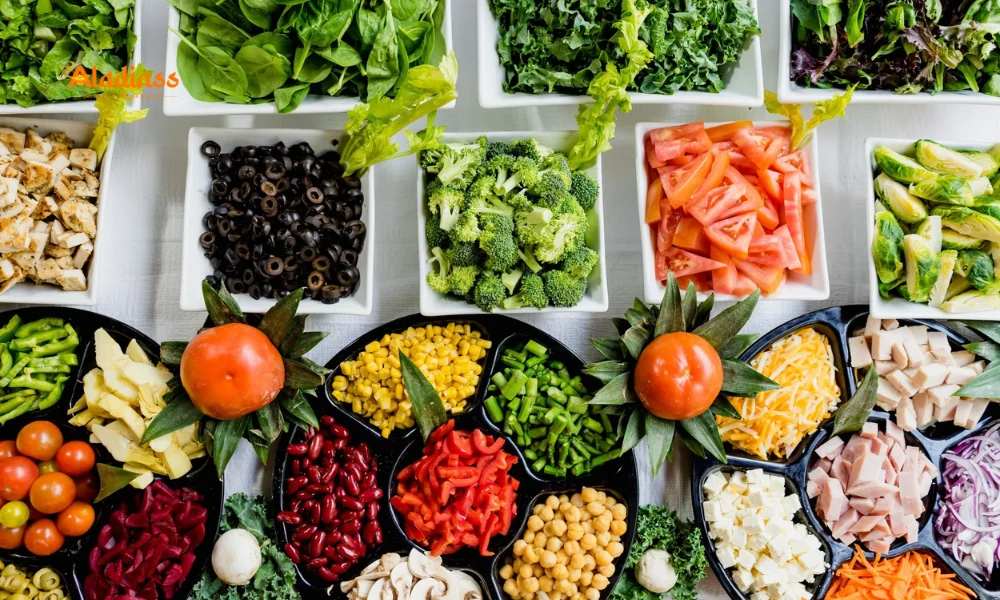15 Tips for Nutritious Meals on a Budget

15 Smart Tips for Nutritious Meals on a Tight Budget in 2025
Eating healthy doesn’t have to drain your wallet. With grocery prices rising—up 3.2% in 2025 according to the U.S. Department of Agriculture—smart strategies can help you enjoy nutritious meals without breaking the bank. From planning meals to choosing seasonal produce, small changes in how you shop and cook can yield significant savings. These 15 budget-friendly tips offer practical ways to prepare delicious, health-focused meals while keeping costs low. Perfect for families, students, or anyone looking to stretch their grocery budget, this guide will help you eat well and save money in 2025.
Healthy eating is often perceived as expensive, but affordable options abound if you know where to look. By focusing on whole foods, minimizing waste, and adopting cost-saving habits, you can create meals that are both nutritious and budget-friendly. A 2024 study in the Journal of Nutrition found that home-cooked meals using whole ingredients cost 20–30% less than processed alternatives while offering better nutritional value. Whether you’re a beginner or a seasoned cook, these tips will empower you to make smart choices, reduce food costs, and maintain a balanced diet without sacrificing flavor.
1. Plan Meals Ahead of Time
Meal planning is a cornerstone of budget-friendly healthy eating. By mapping out your meals for the week, you can create a precise grocery list, avoiding impulse buys and reducing food waste. A 2025 survey by the Food Marketing Institute found that households with meal plans spend 15% less on groceries. Start by selecting simple recipes, such as vegetable stir-fries or lentil soups, and repeat them to streamline shopping. Use a notebook or app to list ingredients, checking your pantry first to avoid duplicates. This approach not only saves money but also ensures a balanced diet with varied nutrients.
Meal planning also reduces stress during busy weeks. Knowing what you’ll cook each day eliminates last-minute takeout orders, which can cost $10–$20 per meal. For example, a planned dinner of rice, beans, and seasonal vegetables costs under $2 per serving. Apps like Mealime or Yummly can help beginners create budget-friendly plans, while experienced cooks can mix and match recipes to keep things fresh. Over time, this habit builds savings and makes healthy eating a seamless part of your routine.
2. Buy Seasonal Produce
Seasonal produce is often cheaper and fresher than out-of-season options. In 2025, local farmers’ markets offer deals on in-season fruits and vegetables, such as apples and squash in fall or berries in summer. According to the USDA, seasonal produce can cost 30–50% less than imported alternatives. For example, a pound of in-season zucchini may cost $1 at a market, compared to $3 for off-season asparagus. Check local guides or ask vendors to learn what’s in season, and stock up when prices are low.
Freezing extra produce preserves nutrients and extends shelf life. For instance, blanching and freezing summer green beans can save you money in winter. Seasonal eating also adds variety, as you experiment with different fruits and vegetables throughout the year. Social media posts on X highlight the popularity of seasonal shopping, with users sharing tips like “Buy carrots in bulk in fall—they’re dirt cheap!” This strategy stretches your budget while ensuring fresh, flavorful meals.
3. Choose Whole Foods Over Processed Items
Whole foods like rice, beans, and oats are budget-friendly staples that outperform processed meals in both cost and nutrition. A pound of dried beans costs around $1.50 and yields 6–8 servings, compared to a $5 single-serving frozen meal. These ingredients are versatile, forming the base for dishes like chili, stir-fries, or oatmeal bowls. A 2025 report by the Academy of Nutrition and Dietetics notes that whole foods provide more fiber and micronutrients, keeping you fuller longer and supporting overall health.
Processed snacks, such as chips or pre-packaged dinners, often contain added sugars and sodium, offering less value for money. Replacing them with whole foods allows you to control ingredients and flavors. For example, cooking a pot of brown rice and vegetables costs less than $2 per person and can be customized with spices. This approach saves money and aligns with healthy eating goals, making it a win-win for your wallet and well-being.
4. Cook in Bulk
Batch cooking is a time- and money-saving strategy that simplifies healthy eating. Preparing large portions of soups, stews, or casseroles can cover multiple meals, reducing the need for expensive takeout. For example, a $10 batch of lentil soup can yield 8 servings, costing just $1.25 each. Freezing leftovers in portioned containers ensures quick meals later, saving both time and money. A 2025 study by the American Institute for Cancer Research found that batch cooking reduces food waste by 25%, boosting savings.
Batch cooking is ideal for busy schedules. Spend a few hours on the weekend preparing dishes like chili or pasta bakes, then reheat throughout the week. Use affordable ingredients like beans, rice, or frozen vegetables to keep costs low. This method also minimizes the temptation to dine out, which can cost $15–$20 per meal. With practice, batch cooking becomes a seamless habit that supports both your budget and health goals.
5. Shop with a Grocery List
A grocery list is your best defense against impulse purchases, which can inflate your bill by 10–20%, according to a 2025 Consumer Reports study. By sticking to a list based on your meal plan, you buy only what you need, avoiding costly extras like snacks or duplicate items. Before shopping, check your pantry and fridge to ensure you’re not buying what you already have. This habit streamlines your shopping and keeps your budget in check.
Apps like AnyList or pen-and-paper lists work equally well. Group items by store aisle to save time, and avoid shopping when hungry to reduce temptation. Shoppers on X share tips like, “My grocery list saved me $50 this month—no random buys!” With a list, you’ll spend less time wandering aisles and more time enjoying affordable, healthy meals at home.
6. Buy in Bulk When Possible
Buying staples like rice, beans, and pasta in bulk can cut costs significantly. A 10-pound bag of rice costs around $10, compared to $2 per pound for smaller packages, saving you 50% per unit. Bulk sections in stores let you purchase exact amounts, reducing waste and packaging costs. Dry goods have long shelf lives, making them safe to stock up on without spoilage concerns. A 2025 grocery trends report noted that bulk buyers save an average of $200 annually.
Store bulk items in airtight containers to maintain freshness. Focus on versatile staples like lentils or oats, which can be used in multiple recipes. While the upfront cost may seem high, the per-serving price is much lower. For example, a $15 bag of quinoa yields 40 servings, costing just $0.38 each. This strategy is perfect for families or anyone looking to maximize their grocery budget in 2025.
7. Use Frozen Fruits and Vegetables
Frozen produce is a budget-friendly alternative to fresh, offering similar nutritional value at a lower cost. A 2025 study in the Journal of Food Science confirmed that frozen fruits and vegetables retain vitamins and minerals when harvested at peak ripeness. A bag of frozen broccoli costs $1.50 per pound, compared to $3 for fresh, and lasts months in the freezer. Use them in smoothies, stir-fries, or soups for quick, healthy meals.
Choose plain frozen options without added sauces to avoid extra costs and sodium. Their long shelf life reduces spoilage, and portioning is easy, making them ideal for small households. X users rave about frozen produce, with one stating, “Frozen berries are a lifesaver for cheap smoothies!” This tip ensures you enjoy nutrient-rich foods year-round without paying premium prices for out-of-season items.
8. Limit Eating Out
Restaurant meals, even fast food, are significantly pricier than home-cooked dishes. A single fast-food meal averages $8–$12, while a home-cooked dinner like pasta with vegetables costs under $2 per serving. Limiting eating out to once or twice a month can save hundreds annually, according to a 2025 budgeting guide by NerdWallet. Cooking at home also allows you to control portion sizes and ingredients, boosting health benefits.
Make dining out a special occasion and redirect savings to quality groceries. Experiment with recipes to make home cooking enjoyable, such as trying new spices or cuisines. A popular X post noted, “Cooking at home feels like a treat when you nail a recipe, and it’s so cheap!” This shift not only saves money but also fosters healthier eating habits.
9. Grow Your Own Herbs
Fresh herbs like basil or parsley can cost $2–$3 per bunch, but growing them at home is nearly free. A $5 seed packet yields months of herbs, requiring only a small pot and a sunny windowsill. Herbs add flavor to meals, reducing the need for expensive seasonings. A 2025 gardening trend report found that 60% of urban households grow herbs to save money and enhance dishes.
Start with easy herbs like mint or cilantro, which thrive with minimal care. Harvest only what you need to avoid waste, and dry extras for later use. This approach is perfect for small spaces and adds a fresh touch to budget meals. X users share tips like, “My $2 basil plant has saved me $50 this year!” Growing herbs is a simple, cost-effective way to elevate your cooking.
10. Embrace Meatless Meals
Meat is often the priciest item in a grocery cart, with chicken costing $3–$5 per pound in 2025. Plant-based proteins like lentils ($1 per pound) or tofu ($2 per block) are cheaper and packed with nutrients. A 2025 study in Nutrients found that meatless meals can cut food costs by 20% while maintaining protein intake. Try one or two meatless days per week with dishes like chickpea curry or lentil tacos.
Meatless meals are versatile and satisfying, especially with spices or sauces. They also add dietary variety, supporting heart health and digestion. A popular X post read, “Swapped meat for beans twice a week—saved $30 a month!” This tip is perfect for budget-conscious eaters looking to diversify their meals without sacrificing flavor.

11. Compare Prices Between Stores
Grocery prices vary widely between stores, with some offering better deals on produce or staples. A 2025 Consumer Reports analysis found that comparing prices can save up to 25% on weekly shopping. For example, a pound of bananas may cost $0.59 at one store but $0.99 at another. Track prices for your most-used items using apps like Flipp or by keeping a notebook.
You don’t need to visit multiple stores weekly—focus on one or two with the best deals. Local markets often beat supermarkets for produce, while warehouse clubs like Costco offer bulk savings. This habit maximizes value and ensures you’re getting the most for your money in 2025.
12. Avoid Pre-Cut or Packaged Foods
Pre-cut fruits and vegetables or packaged snacks cost 2–3 times more than whole foods. A whole watermelon costs $5 but yields 10 servings, while pre-cut chunks cost $4 for just 2 servings. Preparing your own produce takes minutes and saves money. A 2025 budgeting guide noted that avoiding convenience foods cuts grocery bills by 15%.
Batch-prep vegetables on weekends for quick use during the week. Use a sharp knife and storage containers to keep them fresh. This approach ensures fresher, cheaper ingredients while maintaining convenience, making it a smart choice for 2025 shoppers.
13. Drink More Water
Soda, juice, and energy drinks add $50–$100 to monthly grocery bills with little nutritional benefit. Water, often free from the tap, is the healthiest and cheapest option. A reusable bottle saves money on bottled drinks, which cost $1–$2 each. A 2025 health report found that switching to water reduces sugar intake and supports weight management.
Infuse water with lemon, cucumber, or mint for flavor without cost. This simple swap frees up budget for nutritious foods and promotes hydration. X users share hacks like, “Lemon water saves me $20 a month over soda!” Drinking more water is an easy way to boost health and savings.
14. Take Advantage of Store Brands
Store brands offer quality comparable to name brands at 20–40% lower prices. A can of store-brand tomatoes costs $0.80, versus $1.50 for a name brand, with little taste difference. A 2025 Consumer Reports survey found 85% of shoppers are satisfied with store-brand quality. Items like pasta, canned goods, and snacks are safe bets for savings.
Try one store-brand item per shopping trip to test quality. Many are produced by the same manufacturers as name brands. This switch can save $100–$200 annually, making it a practical choice for budget-conscious shoppers in 2025.
15. Reduce Food Waste
Food waste costs the average household $1,500 annually, per a 2025 USDA report. Proper storage, like keeping vegetables in breathable bags or freezing leftovers, extends shelf life. Use odds and ends in soups, stir-fries, or casseroles to maximize ingredients. For example, vegetable scraps can make a flavorful broth for under $1.
Plan meals to use perishables first, and freeze extras in portioned containers. X users share creative ideas, like “Turn wilting spinach into a smoothie—it’s a game-changer!” Reducing waste saves money and keeps your fridge organized, making healthy eating more affordable in 2025.
Comment / Reply From
No comments yet. Be the first to comment!






